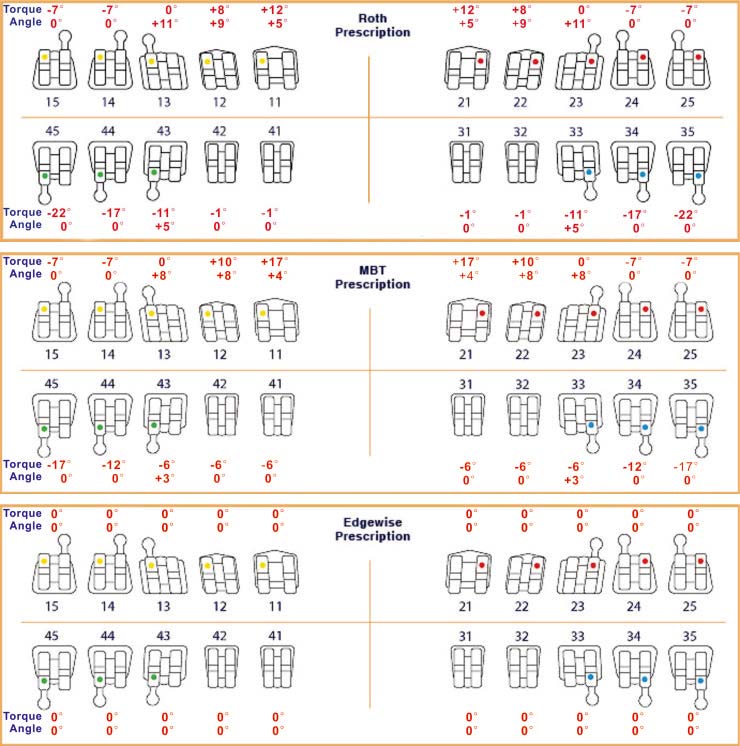
Orthodontic brackets are essential components in fixed appliance therapy, used to align teeth by holding archwires. The main differences lie in their "prescriptions" – built-in values for torque (third-order rotation), tip (angulation), and other features.
Key differences include higher palatal root torque in upper central incisors for MBT (17°) vs Roth (12°) vs Andrews/Edgewise (7°). MBT generally has less tip than Roth. Studies show no clinically significant differences in treatment outcomes between Roth and MBT.
| Feature | Edgewise (Standard) | Roth | MBT |
|---|---|---|---|
| Type | Non-pre-adjusted (requires wire bends) | Pre-adjusted | Pre-adjusted |
| Introduced | 1920s (Edward Angle) | 1970s (Ronald Roth) | 1997 (McLaughlin, Bennett, Trevisi) |
| Common Slot Size | 0.022" or 0.018" | 0.018" or 0.022" | 0.022" (preferred for sliding mechanics) |
| Torque/Tip | None built-in | Higher torque/tip for overcorrection | Adjusted torque (higher upper incisor, lower posterior), reduced anterior tip |
| Clinical Outcome | Similar if bends applied correctly | No significant difference vs MBT | No significant difference vs Roth |
| Tooth | Edgewise/Andrews Base | Roth | MBT |
|---|---|---|---|
| Upper Central Incisor | +7° | +12° | +17° |
| Upper Lateral Incisor | +3° to +7° | +8° | +10° |
| Upper Canine | -7° | -7° | -7° |
To download and view our latest products catalog, please click the button below.
Download